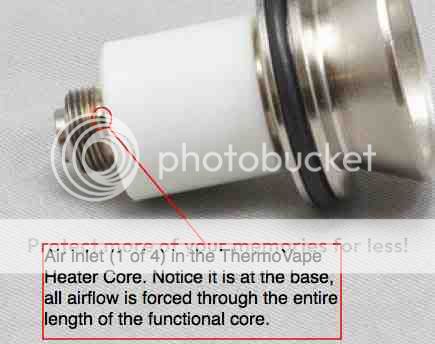Gravityaddict said:
Hello everyone! Extremely new to vaporizer's and this is my 1st post. I have been following this thread since the first day and I really am excited about this unit.
I am curious if anyone put in any thought behind having Delrin (Acetal Homopolymer) in the breathing loop. It does off-gas formaldehyde at normal temps and even more so at elevated temps. A look in to the MSDS sheet on this material will probably give you the exact PPM at what temps. It is a great material to machine due to its stability and lack of "creeping" of dimensions.
The US NAVY has banned the use of Delrin in any application that is used directly in the "breathing loop" because of this. Coming from the guys that have no problem with having you do some dangerous stuff without the proper equipment... This makes me wonder.
Thoughts?
-Gravityaddict
Sure, I have some thoughts. First, breathing loop (as the Navy is using the term) is very different from "flow path" that is discussed on the forum. The breathing loop is a term used to describe diving equipment like rebreathers, a type of complex scuba tank that does not release any bubbles, because the CO2 is contained in the unit, scrubbed, and the exhaled air eventually gets reinhaled. These are great if your a Navy Seal and you have sneak around underwater for hours on end and you don't want a trail of bubbles giving your position away to the bad guy.
So, in that application, a closed, high pressure, highly complex system, the navy does not want delrin used. I am not sure what temps a rebreather reaches, but if you have ever seen one, the are very complex, and have a lot going on inside. This is a much different application then simple mouthpiece for a vaporizer.
Also keep in mind that Delrin comes in different grades, and has different thermal characteristics depending on the grade. We use the highest grade we can source.
Additionally 'off gassing' is an issue at high temperatures (like those used for high speed lathes or more frequently for injection molding) and and with large volumes of the material.
Consider the volume of the mouthpiece, a couple of grams, in such small volume parts, off gassing becomes a non-issue, and prior to forming formaldehyde from acetal you will form acetic acid (Vinegar is acetic acid), which almost everyone would notice that their mouthpiece smelled of vinegar, this just does not happen, the mouthpiece simply does not get warm enough for that reaction to occur (several hundred degrees warmer then the device temp).
Consider the temperature of the mouthpiece. The mouthpiece stays in thermal equilibrium with the insulating shell, with does not reach temps that are that high (way south of 200F), even with heavy use the insulating shell is warm to the touch, not hot, and certainly not melting point hot.
For our application Delrin is good choice, it is FDA, NSF, USDA approved. Of course for those that prefer other options we make the mouthpiece in Electroless Nickel Plated Aluminum. We also just made some in another type of high temperature plastic, PTFE (trademarked as virgin Teflon). These are a little softer then Delrin and some may prefer that. Despite the slightly softer material PTFE actually has an even higher operating temperature then Delrin.
I certainly do not think that anyone should worry about Delrin in the mouthpiece. If they are worried, then we have several options available to them.
Great discussion, thank you for the post.

 Thanks for the awesome discount!
Thanks for the awesome discount!




